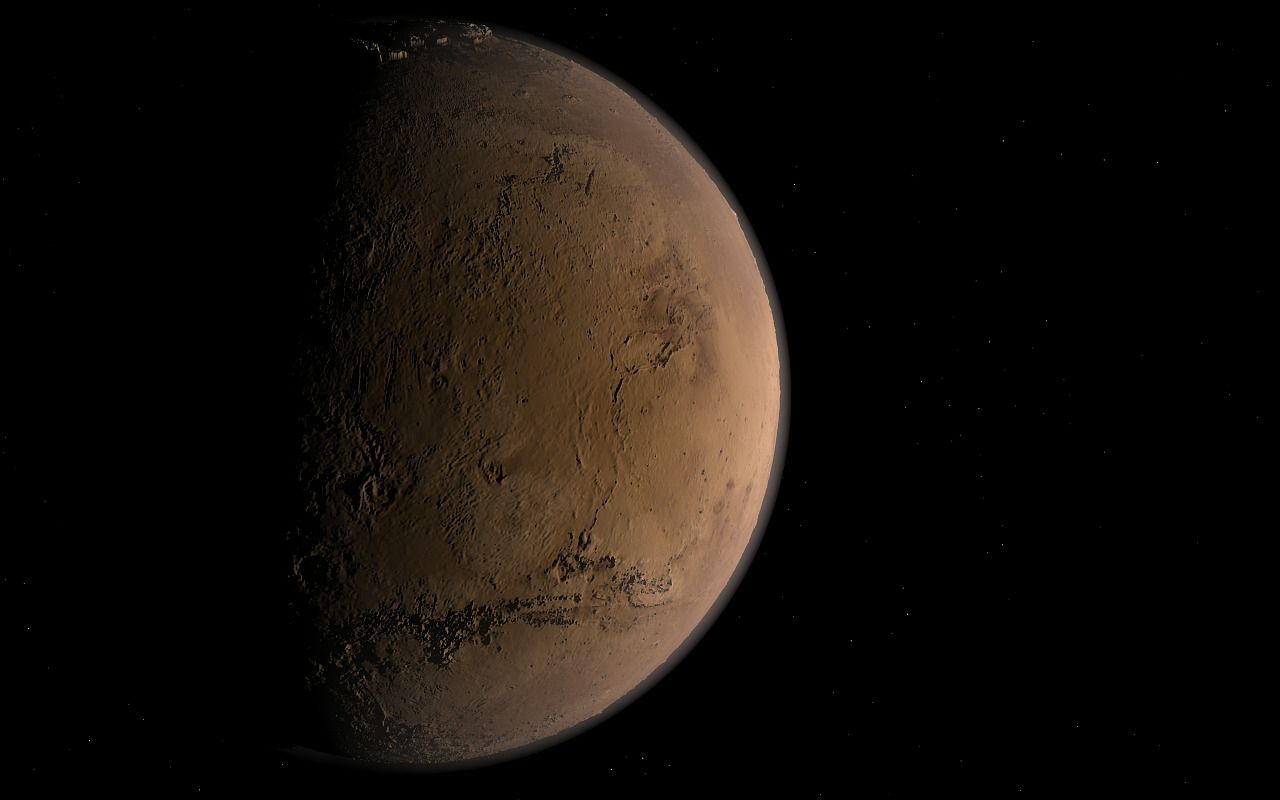There may be enough oxygen on Mars to support life?
The salty subsurface water bodies on Mars that scientists reported in late July may contain enough dissolved oxygen to keep aerobic bacteria alive, scientists reported.
Team ³ scientist A team at the California Institute of Technology (Caltech) and the Jet Propulsion Laboratory calculated that if there is liquid water on Mars, it could – under certain conditions – contain more oxygen than previously thought. According to the model developed, there may be enough oxygen to keep aerobic bacteria alive.
The results of the study published on „Nature Geoscience” are in contradiction to the general There’s no accepted view about Mars. Until now, it has been assumed that trace amounts of oxygen on Mars are insufficient to support even microbial life.
– We have discovered that Mars’ brines may contain enough oxygen for microbes to breathe,” said head The lead author Vlada Stamenkovic of the Jet Propulsion Laboratory in California. – This completely revolutionizes our understanding of the potential for life on Mars, today and in the past – added.
Salt water just below the surface of Mars may have enough oxygen to support a type of microbial life – say scientists. Life on Earth emerged and flourished under similar conditions billions of years ago. But the researchers go further and say that in some The traces of oxygen on Mars have been assumed to be insufficient to support even microbial life on Mars in, the amount of oxygen available could even sustain primitive, multi-com rkowe creature, such as a sponge.
– Oxygen is a key ingredient in determining conditions The researchers have focused on the practical benefits of oil-based polymers – said Woody Fischer of Caltech, co Author of the publication. The atmosphere of Mars is about 160 times thinner than that of Earth and consists mostly of carbon dioxide. Oxygen is only 0.14 percent. Martian atmosphere. For pore According to the National Academy of Sciences, on Earth this life-giving gas makes up about 21 percent of the. The air composition, which hich we breathe.
At the end of July, the world learned that a lake of liquid saltwater had been located under the polar cap of the Red Planet’s South Pole. The lake is located about 1.5 km below the surface of Mars, is at least 1 meter deep and extends for 20 kilometers . The water must be salty, because it did not freeze. Perhaps the lake is similar to subglacial salt lakes discovered in the Canadian Arctic. More on this subject in the text: A lake hidden under the surface was found on Mars.
The high salt content allows water to remain liquid at much lower temperatures, a necessary condition for dissolving oxygen. This makes brines a good breeding ground for microorganisms in oxygen.
Scientists believe that billions of years ago, when Mars had a thick atmosphere and was a warmer and wetter planet, water flowed over its surface gouging gullies and canyons that hich are visible so far. Currently, water on the Red Planet is found in the form of ice in polar caps at the poles of the planet and under its surface. Probes orbiting around They also took into account the planet’s climate and how it has changed over the past 20 million years – even on steep slopes, whose hose appearance changes with the onset of Martian spring, as if the molten l d leaked in d and left dark traces.
Oxygen penetrates into the water from the atmosphere. If salt water were close enough to the Martian soil surface, it could effectively absorb oxygen. To find out how much oxygen it could theoretically absorb, Stamenković and Fischer and their team developed a chemical model to describe the dissolution of oxygen in salt water at temperatures below the freezing point of water. They also took into account Mars’ climate and how it has changed over the past 20 million in years, during which The planet’s axis tilt has changed, thus changing the climate.
These analyses allowed the researchers to deduce which re regions on Mars are most capable of sustaining high oxygen solubility, zar both today and in the geologically recent past. Team ³ discovered that in places where the atmosphere is densest and at low temperatures, which re allow gases such as oxygen to remain in liquid solution more easily, an unexpectedly large amount of oxygen can appear in water. Researchers m bind here with values of several orders of magnitude in size above the threshold necessary for oxygen respiration in Earth’s oceans today.
The locations of these regions The high salt content of the water allows the water to remain in a salty state for a long time in years. During this time, the highest oxygen solubilities have occurred in the last five million in years.
From the scientist’s findings may be a good place for microorganisms in the future when planning landing sites for rovers on the Red Planet. Such locations could provide better targets for searching for signs of life or conditions in a suitable location for a possible base on Mars.
